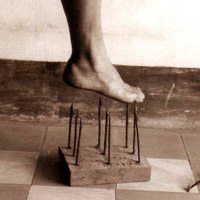It’s that time of the baseball offseason when we start planning the start of players’ offseason throwing programs, and inevitably every year I get some sort of variation of the same question – “When should I begin my offseason throwing program?”
There are a lot of opinions on when to start throwing, and you may have heard many arbitrary dates like January 1st, December 15th, after Thanksgiving, November 1st, or even “what do you mean start throwing, I never stop!”
When to Start an Offseason Throwing Program
Often times it seems the initiation of offseason throwing programs is based purely on time and not on your own personal situation, goals, or physical status. It is always my goal to try to individualize every aspect of my programs for baseball pitchers. Not everyone starts throwing on the same day. There are many factors, but generally it tends to come down to two questions:
- Is your body ready?
- What are your goals?
Is Your Body Ready?
Throwing a baseball takes a toll on your body, especially after a long professional season, or spring and summer of school and travel baseball. I can’t tell you how many baseball pitchers I see at the start of the offseason that look really bad. They are tight, sore, and weak. Not all of them had an “injury” during the season, but let’s be honest, baseball pitchers have a micro-injury every time they pitch.
Taking care of your body is the first and likely most important part of your offseason. Skip this step and you start the offseason behind.
While strength and conditioning has been popularized over the last decade, manual therapy and arm care programs to get your body in shape PRIOR to beginning strength and condition may be even more important. This of it this way, take care of your body, work on your imbalances, clean up any lingering issues of tightness or soreness, and then get your body strong and ready to throw.

You have to address your underlying issues and not just rest and hope you feel better. Get that rock out of your shoe before you start throwing.
Taking a couple of months off at the start of the offseason but ignoring getting your body back to neutral and ready to throw again is like the rock in the show analogy. This applies for both injured and healthy baseball players. If you care anything about your baseball career, you really have to get your body assessed and get on a program to set the foundation for a great offseason. I talked about this in detail in my past article on how to get the most out of the start of the baseball offseason.
How do you know when your body is ready? You have full mobility, strength, and stability. You have no discomfort, even mild. You have gone through an appropriate strength, conditioning, and arm care program to prepare body to throw.
Don’t guess, put the effort into getting your body ready and know you put yourself in the best position to succeed on day 1 when you pick up a ball.
What Are Your Goals?
Once we get your body prepared and you are confident your body is ready to throw, it is now time to discuss your situation and specific goals. There is a big difference between the baseball pitcher that is preparing to pitch for the local Little League team, a D1 college, Minor League Baseball, or even the Boston Red Sox.
For veteran MLB pitchers, they have the luxury of knowing they have a roster spot and can take their time getting ready for the season. They start with the end in mind and the end is game 7 of the World Series. These guys can start throwing in late December and January and have plenty of time.
Unfortunately, not everyone is this lucky. Most younger professional baseball players want to show up to spring training ready to dominate and impress their team. This could have implications on making a big league roster, which minor league level you start at, and even preventing getting cut. Minor league camp isn’t as long as big league camp, so you need to be at your best on day 1. This may mean that you have to start throwing a month or so earlier to have enough time to get your long toss and mound work up to full speed. Collegiate athletes are often in a similar situation.
For the younger athletes, the winter is often spent working on coaching to enhance your biomechanics and development. I think it is great to work with a pitching coach during the winter, however, you have to be cautious to avoid overuse. If you had a long summer and maybe even fall ball, you need time off from pitching. I’ve said this before but I can’t say it enough – If you throw more than 100 innings or pitch more than 10 months out of the year, you are over 3x more likely to get injured.
That is a scientific fact that has been researched.
Take the winter to work on your strength and athleticism. If you haven’t pitched that much, great, by all means get great coaching and work on repeating your delivery, but be smart about your volume, you don’t need to be throwing 3 bullpens a week all winter (I’ve seen it…).
What about if you are a position player? In my mind, position players do not need to be stretched out as far and for as long, but throwing programs are important to follow to prepare for the season. I usually start my position players throwing around January 1. That still gives them plenty of time to stretch out their long toss and then work on position specific throwing. Many young position players are just as tired at the end of the season and need to rest and regen their body.
I wish it were simple to say that there is an exact “best” day for baseball pitchers to start their offseason throwing programs, but there really isn’t. Each player should be assessed and treated uniquely based on their body, situation, and goals.
Ready to get started? Learn more about what we do for baseball offseason performance training at Champion Physical Therapy and Performance.







